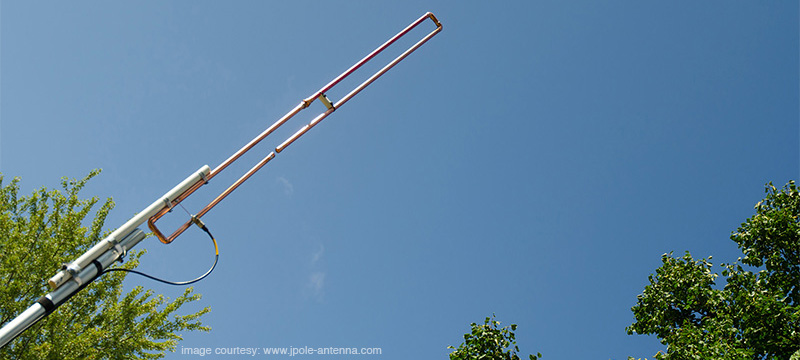
When Michael Martens, callsign KB9VBR, set out to make his first J-pole in 2001, his drive was purely utilitarian–the local ham club was setting up APRS digipeaters around town and he figured it might be cheaper to fabricate his own antenna. The J-pole is typically one of the first antenna designs an aspiring homebrew-ham attempts. With simple, inexpensive components and relative ease-of-use, the J-pole is a great gateway into the world of antennas, and it offers some additional technical benefits as well. Michael knew this and decided to give it a try.
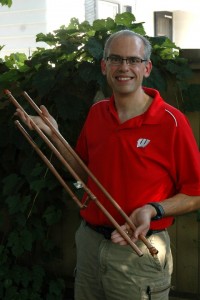 Fast-forward several years and Martens is at the helm of a thriving, industry-leading J-pole antenna operation. KB9VBR Antennas, located in the heartland of Wisconsin, may not be a large electronics equipment manufacturer, but when it comes to J-poles, they pretty much own the market. (Just Google ‘j-pole antenna’–theirs will be the first website after Wikipedia.) Martens has received praise for his antennas from all over the world, and has even garnered recognition from Hollywood and some other publications. Most recently, the set designer of the CBS TV series Under the Dome reached out to KB9VBR Antennas and purchased a handful of antennas for set props. I caught up with him this week to learn more about his typical workflow and to hear how the business has been doing.
Fast-forward several years and Martens is at the helm of a thriving, industry-leading J-pole antenna operation. KB9VBR Antennas, located in the heartland of Wisconsin, may not be a large electronics equipment manufacturer, but when it comes to J-poles, they pretty much own the market. (Just Google ‘j-pole antenna’–theirs will be the first website after Wikipedia.) Martens has received praise for his antennas from all over the world, and has even garnered recognition from Hollywood and some other publications. Most recently, the set designer of the CBS TV series Under the Dome reached out to KB9VBR Antennas and purchased a handful of antennas for set props. I caught up with him this week to learn more about his typical workflow and to hear how the business has been doing.
Scanning: the ‘Gateway Drug’
Michael got his start in radio very early in life. Around the age of 10 he received a world band radio which seems to have started it all. From then on, scanning was a part of his life. Throughout the 90’s Michael’s enjoyment of the hobby grew, and he found himself curious about amateur radio after tuning into some local amateur repeaters. Before long he was a licensed ham and an active member of his local ham community.
The business grew slowly from its start in 2001 until around 2010. During that time, KB9VBR Antennas were mainly sold on Ebay. Michael considered the business as merely a means to supplement his ‘radio fund’–he didn’t make much money, but what he did make was gladly put toward the purchase of new radios and other equipment. In his own words, he considered the antenna business at that time as more of a “hobby thing.” It was during this period that Michael really perfected his process and fine-tuned his j-pole antenna design.
A period of career transitions in 2010 became the catalyst for what has now become a livelihood. Confident he had developed a solid and marketable product, Michael decided to take a more active approach to building the business. More time and money was poured into the KB9VBR website, developing a customer-base, and solidifying his position as the leader in custom j-pole antennas. No longer relegated the status of ‘past-time’, KB9VBR Antennas became a major source of employment for Michael.
High Growth, Low SWR
At the present time, KB9VBR Antennas seems to doing quite well. Michael currently offers a wide assortment of J-pole antennas on his website, all of which tailor to a very specific band, including 2 meters, air band, marine band, and rail band. For the most popular bands like 2 meters and 70 cm he has multiple designs available (Slim-Jim, Break-a-way, etc.), depending on the application. I’m actually really impressed by the build quality of these antennas (I haven’t personally used one yet, though I hope to fix that in the future!) They are all built with solid copper piping, whichwe all know to be highly conductive–Michael claims this has a tremendous impact on energy efficiently. And of course the material is sturdy, which increases durability and longevity as well.
When I asked Michael about the benefits of J-pole antennas, he stressed the particularly low noise-floor they provide, which is attributed to a DC-ground feed point, as well as the fact that they are all a full half-wave. (This also makes for easier installation–they don’t require a ground plane.) Although J-poles don’t offer much gain due to their design–usually around 2 to 2.5 dB–the low noise-floor they offer creates a ‘perceived gain’ effect, passing along higher RF sensitivity to the radio.
For those new to the J-pole design, they are known to have first been used as a ‘trailing’ antenna attached to zeppelin airships, dating back to 1909. As mentioned above, the J-pole utilizes a half-wave design, and it is matched to the feedline by a quarter-wave transmission line stub which runs parallel to the radiator (see diagram.) Impedance is matched by simply sliding the feedpoint up or down the stub. It radiates in an omnidirectional circular pattern, which makes for a practical and affordable repeater antenna. Depending on the material used, they can usually facilitate higher power outputs as well. Michael claims his antennas to be capable of handling 250 watts (though only tested to 170 watts), and I’ve seen some J-poles that are capable of the full 1500 watts allowed by the FCC!
Perhaps the most incredible thing about Michael’s business is how affordable his products are. The flagship KB9VBR 2 Meter Antenna will cost you a mere $34.00–cheaper than many basic Diamond antennas! And depending on which model you order, shipping is only $9! To me it’s an amazing value, not least considering how much experience and effort is put into each antenna. Besides this, Michael has also told me that he takes pride in providing top-notch customer service, something that is quite evident by reading customer reviews on the 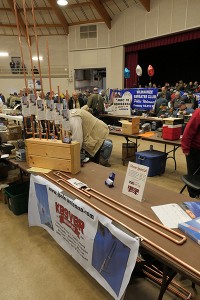 business website. I couldn’t find a review with less than 4/5 stars, and many customers comment on how positive their interactions were with the business.
business website. I couldn’t find a review with less than 4/5 stars, and many customers comment on how positive their interactions were with the business.
Some seasoned Hams may think J-poles are the sort of thing that should be homemade (designs and calculators are readily available online.) After all, the materials are quite cheap, and the design simple. I think it comes down to an issue of quality and price, however. See, I happen to like doing things myself, and yet I’m certain I couldn’t make a J-pole with the same experience-born precision as Michael. It would take a great deal of my time, and I probably wouldn’t get it right the first or second try. KB9VBR Antennas puts a solid, efficient antenna in customers’ hands for such a low price, it makes it hard to use the “I could build one just as easily” excuse. For newer Hams, especially, spending $40 on a new J-pole at KB9VBR Antennas can significantly increase a radio’s coverage.
The Human Factor
One of the first things I noticed about Michael is how his enjoyment of radio has been the driving factor in his business. Everything has been born out of his love of the hobby, and this has noticeably affected his product-line and customer service. He clearly wants to be a resource for Hams of all experience levels, and his website is a testament to this. The KB9VBR blog includes ‘how-to’ and ‘Q & A’ articles on almost anything you could be curious about. And speaking of Michael’s website, it happens to be one of the most attractive, easy-to-use amateur radio websites I’ve used (something I believe is lacking in the online amateur radio world.) KB9VBR Antennas is, in my opinion, exactly the kind of business we need more of in ham radio!
If you’re interested in purchasing one of KB9VBR’s J-poles or just want to check out Michael’s blog, the website is www.jpole-antenna.com–easy to remember! I’ve been super impressed by Michael and everything he has to offer, and I’ll make sure to plan some actual KB9VBR product reviews in the near future. If you are thinking about purchasing a J-pole, I’ve worked out a deal with Michael: ARTech readers can receive 10% off an entire order by simply using the coupon below. If you’re on the fence, feel free to download the coupon and use it later–it’s good until September!
Do you have any experience with J-pole antennas? Have you used one of KB9VBR’s antennas in the past? If so, please let me know in the comments! I’d love to know what you think. Cheers, and 73!




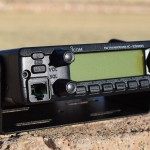

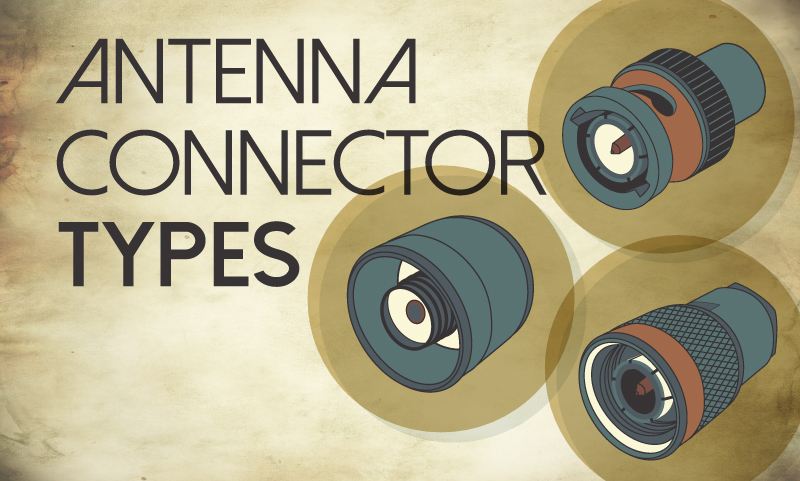
As a newbie living in a small apartment I had no space for a shop, and even though I could probably have cobbled together a home-brew J-pole in the kitchen, a thoroughly designed and beautifully built antenna from KB9VBR would have been attractive at twice the price. An order was placed and my new J-Pole resides in the attic, giving my two-meter rig an excellent reach. Michael’s service was extremely quick and his instructions were easy to follow. It’s hard to beat an experience like this!
That’s great! I could tell by speaking with Michael that customer service is important to him. Question for you–how do you have it set up in your attic? Any issues you ran into? I imagine there are plenty of metal objects and wires to avoid up there.
I purchased one of these J-poles from Michael and not only did I get a great antenna, but his customer service was better than top notch. You have to try these. Yes, you could make one of them at home, but by the time you put together all the parts and get the measurements correct, heat up your iron, and hope for the best, you could buy Michael’s antenna. DO IT NOW, and you won’t regret it.
Sounds like good advice! What model did you go with?
I’m about to build my first J-pole – I’d buy one but shipping would kill me.
2m/70cm j-poles – do they really work >
I’m pretty curious about the dual-band J-poles as well. It seems that, depending on what center frequencies you desire for 2m/440, they actually yield similar antenna lengths. See this article on that: http://www.kk4ice.com/?page_id=20
As for the price, Michael KB8VBR only charges about $7 for shipping. I personally couldn’t make a J-pole for less than $40 (which is about the overall cost.)
Good luck on the antenna build!